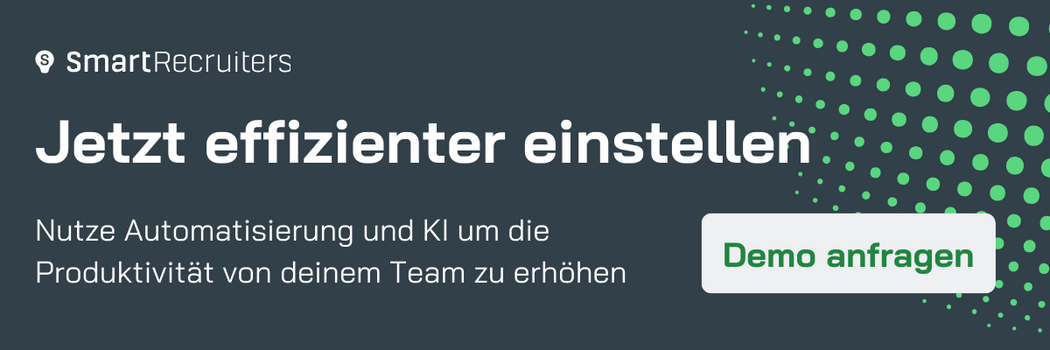Table of Contents
- The Value of an Internal Recruiting Strategy
- The Hardest Soft Skill
- Recruiting Doesn’t End with an Offer
- Building a Culture of Internal Recruiting
- Watch the SmartRecruiters Webinar, “Transforming Your Internal Recruiting Strategy”
The Value of an Internal Recruiting Strategy
It’s no secret that traditional hiring methods are not working. 80% of new hires fail within the first 18 months and over 70% of startups say they can’t hire quickly enough to meet their needs.
Internal recruiting is a strategy that many organizations overlook, neglecting the fact that not only do internal promotions and lateral transfers represent the top source of hire at almost every organization, but also the key to improving employee engagement, retention and worker productivity.
A recent SmartRecruiters survey of over 200 global TA professionals revealed that only about 50% of employers had any sort of dedicated strategy or standardized process for internal recruiting; of those with standard procedures or policies, over 3 in 4 of those respondents indicated that it was actually more difficult for current workers than external candidates to be successfully hired for open requisitions, largely as the result of additional eligibility requirements or mandatory approvals.
Not a whole lot of what happens in hiring makes a ton of sense, but internal recruiting, in fact, reveals one of the biggest disconnects between hiring success and recruiting reality. Recruiters today are increasingly being asked to do more with less, particularly given the consistent tightening of both headcount and budgets in the face of the COVID-19 crisis.
This has led many employers to look for recruitment process automation (or “AI,” if you’re in software sales or product marketing) solutions, programmatic advertising platforms, advanced sourcing and stack ranking engines and other technologies designed to drive increased efficiency and efficacy in the hiring process.
When it comes to connecting people to jobs at scale, however, the answer for driving hiring success at many organizations isn’t a platform or product – it’s about turning recruiting from its almost exclusive focus on sourcing and developing external candidates and instead, starting the process with the highest performing talent community of all – your own org chart.
If you’re one of the 50% of employers who doesn’t have an internal recruiting strategy, or if you’re wondering how to improve or optimize your existing internal mobility strategy, there’s never been a better time than right now. Here are some critical things employers should be thinking about to build a business case for prioritizing internal recruiting and hiring – and how to build the foundation for creating a culture of talent mobility at your organization.
The Hardest Soft Skill
A recent LinkedIn study found that 69% of TA leaders link internal hiring to improved new hire productivity, and that 63% of recruiters report an increase in hiring velocity, with time to fill being significantly shortened.
More importantly, though, the average hiring manager net hiring score tends to be dramatically higher for internal hires than external candidates, a sentiment that’s shared by internal hires themselves, particularly when it comes to driving increased employee satisfaction, engagement and retention – all critical talent management metrics.
Additionally, internal candidates have the advantage of coming into their new roles already equipped with the sort of institutional knowledge, which is a skill set whose relative importance can’t be overstated.
While it rarely warrants inclusion in most job descriptions, it would be difficult to conceive of any of the laundry list of “preferred” qualifications or experience appended to so many job descriptions that would have a more dramatic impact on business continuity or bottom line results than the direct experience and company-specific expertise internal hires inherently bring to their new roles.
This knowledge, simply, doesn’t exist on the open market, and is the one job qualification that is impossible to source externally (boomerangs notwithstanding).
Given the scarcity of employer specific skill sets and the relative impact that institutional knowledge has when it comes to enabling hiring success, looking inside before opening a search externally should be the rule, rather the exception, to developing a shortlist of top talent. Simply, the best talent available to your organization is overwhelmingly already employed there.
Recruiting Doesn’t End with an Offer
Almost every employer likes to consider their company an “employer of choice” (even if their offer acceptance rates seem to proffer evidence to the contrary) and even the highest volume, highest turnover organizations have extant employer branding and messaging that any job posting represents more than just a job, but a starting point for building a successful career.
Most of us know that’s almost as generic, and almost as specious, a statement as “our people are our greatest assets.” But if you want to create a competitive advantage when it comes to hiring, it’s time to transform what’s become a tired cliche into a foundational element of your company’s culture and employee value proposition.
Employees who have worked in multiple departments or business units – even if those movements have been lateral as opposed to strictly linear – report much higher levels of company loyalty and job satisfaction than employees within their same department who lack the same depth of internal experience – meaning that empirically, the quickest way to upskill any workforce seems pretty simple: provide as many paths to internal mobility as possible.
Moving people around within an organization, whether as part of a rotational program or as a dedicated internal recruiting and employee development initiative, makes workers feel more invested in not only job performance, but also, the bigger business picture and their ability to impact organizational success. The more invested employees are, obviously, the greater the relative ROI will be for both recruiting and retention.
Additionally, internal mobility’s significant impact on retention results makes employers’ hiring efforts exponentially less frustrating; instead of constantly building and nurturing a pipeline of potential candidates, they can instead focus on proactively developing, retaining and engaging top performers and high potential workers.
This doesn’t mean employers need to stop external sourcing altogether; internal mobility, obviously, creates the need to backfill existing roles with new hires.
The difference is that most of these backfills are much easier to source as most internal movements ultimately end up being promotions, meaning that these roles require less experience or position related requirements than backfilling the higher level jobs successfully filled through internal hiring.
And, of course, organizations which consistently develop and promote internal workers as an integral part of their talent culture are much more likely to generate exponentially more referrals than those without a talent mobility strategy in place.
And referrals, of course, are the top performing source of hire externally – meaning that at an average company, internal hires and referrals will make up between 70-80% of all sources of hire – despite the fact that only around 15% of an average employers’ talent budget is dedicated to investing in either discipline.
This is a big miss, but one that’s easily correctable. This is especially true given the preponderance of empirical and quantitative evidence supporting this strategic switch in source of hire allocation – and overall TA spend. It may seem counterintuitive at first but it makes perfect sense when you consider what happens when organizations invest less heavily into their internal recruiting programs while continuing to expect seniority levels to rise across departments on average every two years, according to McKinsey research.
Building a Culture of Internal Recruiting
The responsibility for internal recruiting is shared among the HR department, managers and employees. Internal recruitment starts with an organization’s commitment to a talent sharing mindset that creates continuous development opportunities for employees across roles, projects or gigs within their current jobs.
That means managers need to have deeper conversations with their teams about what they can expect from them in future assignments; including how this may impact career paths over time.
Managers should also be intentional about modeling transparency by regularly updating senior leadership on hiring successes and challenges so expectations are aligned around the needs of the company versus individual ambitions.
And finally, employees must prepare themselves by recognizing that mobility will happen as part of working at your organization – both internally and externally – which includes keeping skillsets up-to date and encouraging cross-training opportunities as well as cross-functional collaboration as possible.
Watch the SmartRecruiters Webinar, “Transforming Your Internal Recruiting Strategy”
If you’re interested in learning more about how to turn internal recruiting into a competitive advantage for delivering hiring success, you won’t want to miss our webinar, “Transforming Your Internal Recruiting Strategy,” recorded on May 4 at 10 AM PT/1 PM PT.
We’ll be joined by Tracey Allison, Director of Global Talent at Avery Dennison, Madeline Laurano of Aptitude Research and our own Tony de Graaf as our expert panel looks at what’s new, what’s next and what every recruiter needs to know to survive (and thrive) when it comes to internal recruiting.
Give us an hour, and we’ll give you actionable tips, tricks and takeaways to transform talent mobility. Watch on-demand.






































